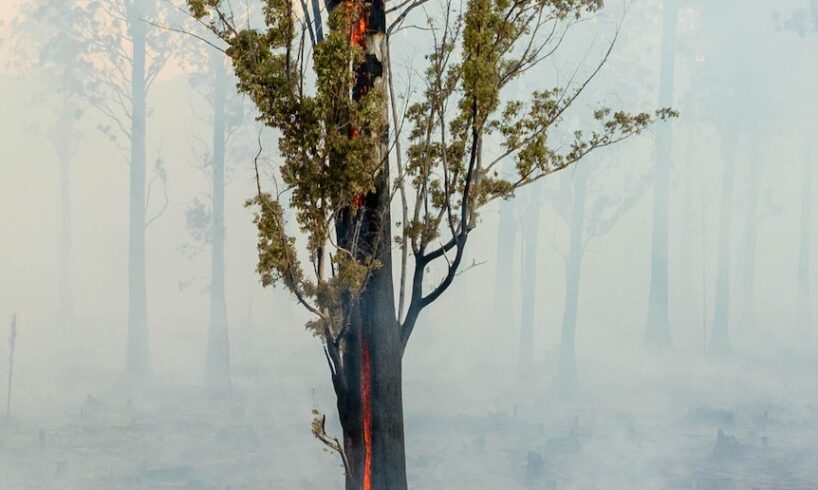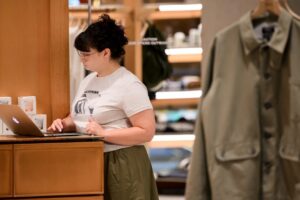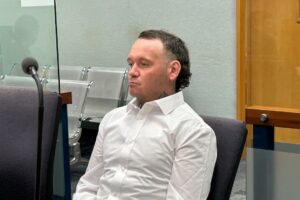
Less than a week out from the Tasmanian election, the Liberals and Labor have steered clear of announcements for stronger environmental protection, instead focusing on industries and “brands”.
The snap election comes after the State of the Environment report was tabled in parliament last September — the first such report in Tasmania for 15 years, despite it being required every five years.
It showed that out of 29 environmental indicators, 16 were deteriorating, six were stable, two were improving and five lacked enough data to be fully known.
Tasmanian State of the Environment report
This included a worsening situation for threatened flora and fauna, the increasing fragmentation of native vegetation, the spread of invasive weeds and animals, and a lack of reliable data for water quality.
The report made 16 recommendations, the Liberal government accepted six in full.
At last year’s state election, the Liberals’ environment promises — under the title “keeping our parks and environment strong” — listed a range of funding for visitor infrastructure in state and national parks.
An oil spill at Lake Rosebery in January. (ABC News: Bec Pridham)
The only part that referenced environmental outcomes was for captive breeding programs for the endangered Maugean skate, and for the critically endangered swift parrot and the orange-bellied parrot, each of which face ongoing pressure from industry.
On Friday, Premier Jeremy Rockliff said the environment was part of Tasmania’s “brand”.
“We would not have a global brand of strong environmental credentials if it wasn’t for the way that we nurture and sustain our industries in Tasmania,” he said.
“It’s about getting the balance right.
“Half of Tasmania is in reserve. That sends a very clear message to the world of our environmental credentials.”
A significant proportion of that “reserve” land is the Tasmanian Wilderness World Heritage Area.
Mr Rockliff also listed the state’s new container deposit scheme as a positive environmental outcome.
Sewage flows into the River Derwent without being fully treated. (Supplied: Marine Solutions)
He earlier announced a plan to make it easier for large industrial companies to negotiate and complete trade waste improvements with TasWater.
In December, excessive trade waste from the Cadbury factory in Hobart caused a sewage treatment plant to fail, resulting in mostly untreated sewage flowing into the River Derwent for several days, with beaches closed.
Labor looks to native logging laws as example
Labor’s only environment announcement this campaign involved streamlining environmental approval for industries, including renewable energy.
Labor leader Dean Winter used the regional forest agreement (RFA) as an example — a process in which native forest logging is “exempted” from additional assessment under federal environmental laws.
Cleared forest road into a native forest logging coupe at Kermandie. (Supplied: Bob Brown Foundation)
Your Say: Tell us what matters to you this Tasmanian election
Mr Winter said the idea was to speed up environmental assessments for projects like the Robbins Island wind farm.
“By coordinating environmental assessments through RFA style agreements, that means that we can get to the decision more quickly, whether that’s good or bad, so that we can actually see projects get some more certainty,” he said.
In a review of federal environmental laws by Professor Graeme Samuel — released in 2021 — the RFA system was described as providing “weaker” environmental protection, and that oversight was “insufficient”.
A regeneration burn in a native forest coupe, which blanketed the nearby town of Maydena in dense smoke for several days in 2023. (Supplied: The Tree Projects)
This month, state-owned logging company Sustainable Timber Tasmania released its updated list of native forest coupes that can be logged, burnt and re-sown at short notice, covering 39,417 hectares.
Of those, about 6,300 hectares includes breeding areas for the swift parrot.
‘Decades of underinvestment’ causing water, sewage woes
When asked about environmental policies this election, Mr Winter said he wanted to address water quality.
“We’ve seen over the course of the last 11 years, for example, the number of sewage spills into our waterways continuing,” Mr Winter said.
“I want to work really hard with TasWater and local councils so that we can clean up our waterways.”
A report into Tasmania’s water and sewerage industry, released last month, showed there were 64 sewer breaks and chokes per 100 kilometres of sewer — three times worse than similar-sized water authorities interstate.
Murky water at the Cameron Bay sewage treatment plant after it was hit by excessive trade waste. (Supplied: Hydro Flow)
Just under a quarter of the state’s potable water remains unaccounted for — or goes missing — each year.
TasWater continued to miss service standard targets, with the water authority blaming “decades of underinvestment”.
Major parties sidelining issue, Greens say
Tasmania’s Environment Protection Authority (EPA) was separated from the environment department in 2022, in an effort to make it more “independent” from government.
Dead salmon in an enclosed pen in the Huon Channel, near Southport, during a mass die off. (Supplied: Bob Brown Foundation)
Promise tracker: What the parties are saying this election
But the Tasmanian Greens say this intent has not been achieved, because the EPA still has a “statement of expectation” from the environment minister.
This includes that the EPA will “support sustainable development in Tasmania”, which the Act defines as “the use, development and protection of natural and physical resources”.
The term, to “protect the environment of Tasmania”, was removed from the Act in 2008 and has not returned.
Greens leader Rosalie Woodruff said both major parties were sidelining environmental protection.
“The Liberals have promised to do nothing. The Labor party is silent,” she said.
“The Liberal and Labor party both are prepared to log and burn native forests in a climate emergency, and we know they are both backing big salmon corporations.”
Human impacts of poor environmental outcomes
An Invasive Species Council forum this month heard how Tasmania’s environmental issues were continuing to have impacts on people’s health, on volunteer groups and on farmers.
Finn Pasanen is blind in his left eye due to toxoplasmosis, contracted by his mother while he was in utero, likely caused by stray and feral cats that frequented their backyard.
Feral cats have a range of impacts on the environment, and can even pass on diseases to humans. (Supplied: Hugh McGregor/Arid Recovery)
Mr Pasanen said it had greatly affected his hand-eye coordination and depth perception, and he suffered motion sickness and headaches.
“The best thing to do to reduce toxoplasmosis is getting your cats to not roam freely, [it’s] much less likely to develop it themselves and become a vector,” he said.
TasFarmers chief executive officer Nathan Calman said toxoplasmosis was also causing problems for lamb and wool producers.
The State of the Environment report found that invasive animals were continuing to increase as an issue in Tasmania, particularly cats and fallow deer.
Gorse is one of the invasive weeds that is continuing to spread in Tasmania, causing environmental harm. (ABC Rural: Luke Radford )
Landcare Tasmania chief executive officer Peter Stronach told the forum that volunteer groups were under increasing pressure due to the ongoing spread of invasive weeds.
He said they remained heavily reliant on fundraising but government support was sporadic.
“We don’t get the funding that we need, and when the funding does come it’s quite haphazard, to say the least,” he said.
“We can’t keep doing this for nothing.”Loading…
Source





